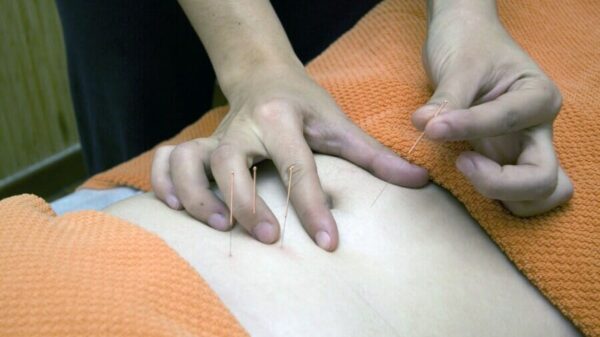Here’s why a decrease in this vital nutrient can lead to health complications and how you can increase your vitamin D intake during the fall and winter months.
Why there’s less vitamin D in the shorter, darker days
As you may know, our bodies generate vitamin D through sunlight exposure. “Since our skin requires direct sunlight for this process, shorter days can lead to a reduction in vitamin D production during the winter months,” explains Jacqueline Gomes, RD, a registered dietitian located in Warren, New Jersey. “Our vitamin D levels usually peak in late summer and early fall, which means our stores can begin to deplete just before winter arrives.”
Here is a deeper dive into the mechanism: “Ultraviolet B (UVB) rays penetrate the top layer of your skin and convert a cholesterol derivative into vitamin D3, which then moves to the liver and kidneys for further processing into active vitamin D,” adds Raj Singh, MD, FACP, FASN, a primary care physician based in Las Vegas.
Vitamin D produced via this method may persist in the bloodstream for at least twice as long as vitamin D obtained from supplements, according to a 2023 study in the Brazilian journal Revista Paulista de Pediatria. However, weather conditions are a factor. “On a sunny day, your skin can generate a significant amount of vitamin D in a relatively short time,” Dr. Singh states. “On a cloudy day, the synthesis still occurs, but at a slower pace since clouds block a considerable amount of light.”
Your skin temperature may also influence this process. According to Harvard Health Publishing, warmer skin generates vitamin D more effectively than cooler skin. This means that you will produce more vitamin D on a hot day compared to a cooler one.
The effects of insufficient vitamin D on your body
Vitamin D is essential for our overall health. In fact, vitamin D receptors are found in nearly every cell within the body, according to a July 2017 paper in Annals of the New York Academy of Sciences. This crucial nutrient is involved in regulating the immune system, relaxing blood vessels, supporting heart and bone health, and may even aid in preventing certain cancers, as noted by Dr. Singh and Gomes.
Symptoms of vitamin D deficiency can include frequent illnesses and persistent fatigue. Over time, inadequate levels can lead to a deficiency, says Dr. Singh, which may be associated with long-term health complications such as:
- Increased gut inflammation (such as colitis and gut microbiome imbalance)
- Decreased bone health and higher risk of bone loss (leading to osteopenia and osteoporosis)
- Greater risk of cardiovascular issues (due to blood vessel stiffness and worsening heart failure)
- Asthma and chronic lung disease flare-ups (likely linked to increased inflammation)
- Fertility problems
- Increased pain in individuals with fibromyalgia and other chronic inflammatory conditions
Many individuals with low vitamin D levels report symptoms including increased discomfort, fatigue, bone aches, instability in walking due to weak muscles, muscle cramps, and sometimes tingling or numbness throughout the body, according to Dr. Singh.
Recommended daily vitamin D intake
If vitamin D is so crucial, what is the recommended amount we should be consuming daily? The advised daily allowance (RDA) is 600 International Units (IU) or 15 mcg for adults, according to the National Institutes of Health (NIH). Children between the ages of 1 and 18 should receive the same amount, while adults over 70 are recommended to have slightly more—20 mcg (800 IU) daily.
Ways to increase vitamin D during low sunlight periods
Fortunately, the sun isn’t your only ally when it comesto increasing your vitamin D intake during the fall and winter months. Here are some strategies you can implement now, so your vitamin D levels are stable by the time the cold, dark days peak.
1. Incorporate vitamin D-rich foods into your diet
While it can be challenging to obtain enough vitamin D from food alone, it is certainly achievable. Some foods that are high in vitamin D include:
- Fatty fish: A 3.5-ounce serving of salmon provides 526 IU of vitamin D, while light-canned tuna contains 269 IU of vitamin D per the same serving size. Sardines and herring are also excellent sources of this essential nutrient. “Increase your intake of fish with meals featuring salmon and sautéed mushrooms for dinner or a flavorful tuna salad for lunch,” suggests Gomes.
- UV-exposed mushrooms: Unique among plants, mushrooms can be a sufficient source of vitamin D, but only if they are exposed to sunlight during cultivation. “Like humans, they synthesize vitamin D when UV rays reach them,” adds Gomes. When you’re out shopping, seek out Monterey Mushrooms, which are grown under UV light.
- Egg yolks: Two large egg yolks contribute 9 percent of your daily vitamin D requirement. To boost your intake, Gomes recommends starting your day with a protein-rich egg and mushroom omelet.
- Milk: In the U.S., cow’s milk is typically fortified with vitamin D. Some plant-based milk alternatives may also have added vitamin D to mimic the nutritional benefits of dairy. Just remember to check the nutrition facts label for vitamin D content. “For a snack, consider a smoothie made with vitamin D-fortified milk or a milk alternative,” advises Gomes.
2. Think about supplements
If you discover that you’re vitamin D deficient from blood work, your doctor may recommend supplements. To replenish your levels, you will likely need around 6,000 IU of vitamin D3 daily (or 50,000 IU weekly) for an eight-week period, as noted by the NIH. After reaching a healthy level, maintaining it typically requires a daily intake of 1,000 to 2,000 IU.
When choosing supplements, select those certified by third-party organizations like NSF or USP. “Third-party testing confirms that an independent lab, with no connection to the brand, has verified the supplement’s quality and the accuracy of its labeling,” explains Gomes. We particularly recommend Thorne and Nature Made supplements.
3. Utilize peak sunlight hours for outdoor exposure
Even on cloudy or rainy days, the sun’s rays are most potent between 10 a.m. and 4 p.m. To maximize this exposure, consider taking a 20-minute walk during your lunch break, which Gomes notes can enhance both your vitamin D production and mental well-being. “Try to get outside at least three days per week,” she suggests.
Additionally, consider replacing some treadmill workouts with outdoor runs, as this could further boost your vitamin D levels, even in overcast weather or while wearing long sleeves in cooler temps, Gomes advises.
4. Explore using a sun lamp
Research is limited, but some studies indicate that sun lamps, which emit UV rays akin to natural sunlight, could aid in vitamin D production. According to an October 2007 study in Photodermatology, Photoimmunology & Photomedicine, sun lamps can be beneficial for individuals with fat absorption disorders, such as cystic fibrosis or short-bowel syndrome, who may struggle to absorb adequate amounts of vitamin D through their diets. However, further research is necessary to fully validate these advantages.
Those residing in regions with limited sunlight might find short uses of these lamps beneficial, Dr. Singh notes. “However, it’s essential to use eye protection while using sun lamps to safeguard against harmful UV rays,” he adds.
It’s important to distinguish sun lamps from light therapy or light boxes, which do not emit UV rays. Light therapy can be effective for alleviating symptoms of seasonal affective disorder during the winter months, as per the Mayo Clinic.
If you’re considering a sun lamp, consult with your doctor to determine if it’s a suitable option for you and to ask for their recommendation on specific brands.
When to consult a physician about vitamin D deficiency
For many individuals, it’s likely that vitamin D levels will slightly decrease during the shorter, darker months—particularly if you live in colder climates. Trying some of the strategies above may help balance your levels and prepare you for the winter season ahead.
If you’re worried about your vitamin D levels dropping too low (or if you experience symptoms such as muscle pain, weakness, or tingling in your extremities), consult your doctor for a blood test. While your doctor can arrange for blood work at any time, Dr. Singh recommends conducting this test at least annually with your primary care physician.
Based on the results, if it’s determined that you are deficient in vitamin D, you can collaborate with your doctor to create a tailored treatment plan that meets your needs.
































